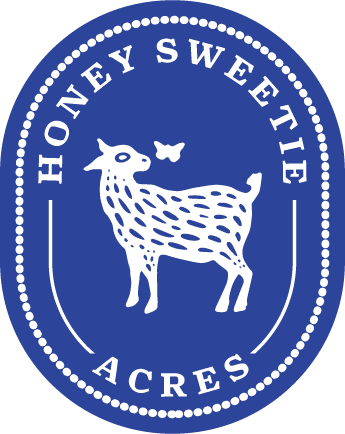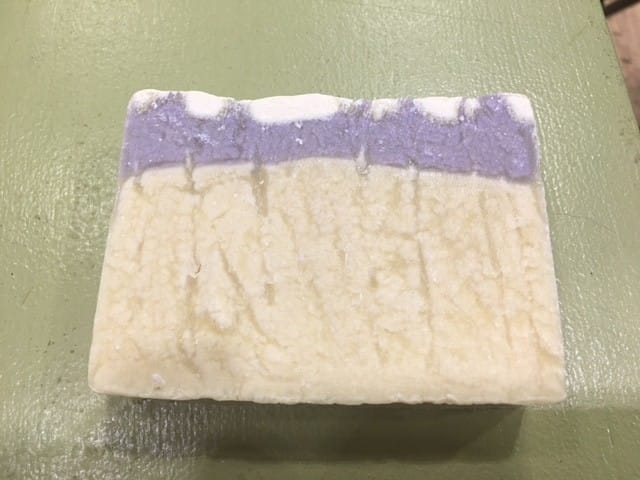What is Glycerin?
Glycerin is formed as a by-product of natural soap production. It is removed from commercial soap as it commands a much higher value when sold to the pharmaceutical industry. When making hand-crafted soap it is possible for glycerin to become visible in the final bars if conditions are just right. You can see lines of pure glycerin in this bar of Lilac soap, which we made specifically for this blog to demonstrate the effect.
The Soap Making Process
In cold-process soap making, the goal is to keep temperatures low to preserve the nutrients. In our case, it would also be detrimental to the organic oils we use. Temperatures can rise due to the addition of fragrance ( or essential oil) and/or the use of colorants. The lye/milk mixture needs to be 100 degrees or preferably less for maximum benefit. To demonstrate glycerin rivers, we created a batch of Lilac soap and use a lye mixture that measured at 115 degrees. As you can see in the photo, they are readily apparent as they congealed together during saponification at high temperatures. Goat milk soap tends to run higher on the temperature scale anyway due to the lactose or milk sugar. This effect can be compounded with the high butterfat content of Nigerian Dwarf Milk. Sometimes we even dilute the Nigerian Milk with the lower-fat Saanen milk to help lower the overall milk/lye mixture temperature.
Is Glycerin Safe?
The good news is that visible glycerin in soap is purely cosmetic and is perfectly safe to use. The majority of the time, glycerin is well hidden and evenly dispersed within the bars. It IS a humectant and draws moisture TO the skin, so there are definite benefits. Some soap creators feel it gives character to the bars and a unique look, and I would somewhat agree, but it is not an effect we would routinely aim for. Preservation of the organic nutrients is always our first priority.


